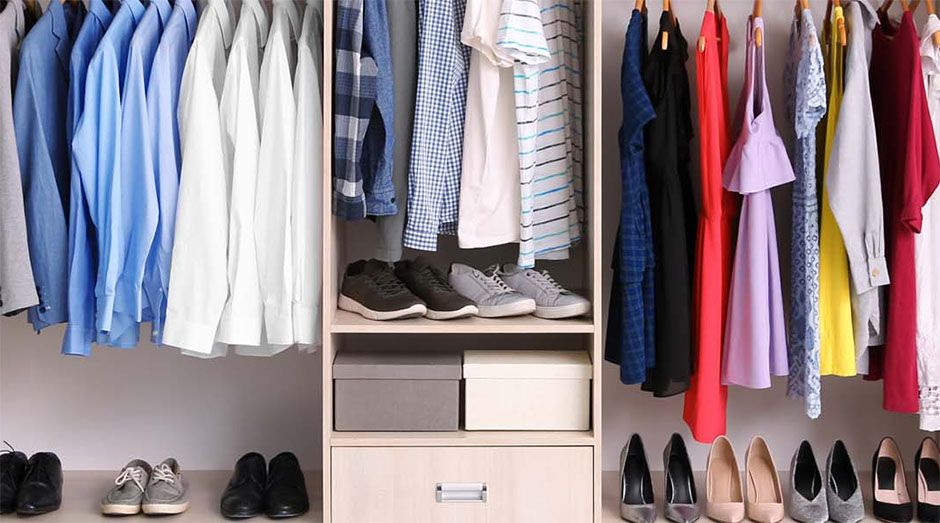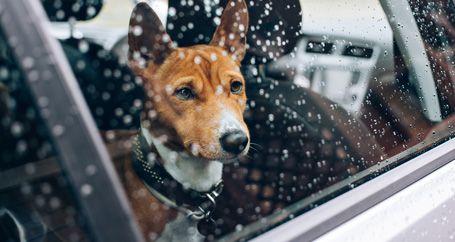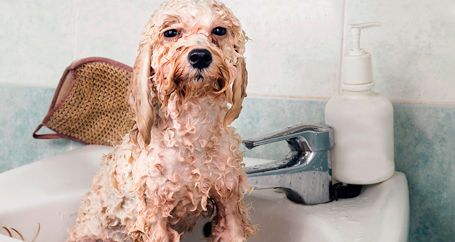"It was the first time Dad hadn’t come home when he was supposed to."
— Amy Levin
As the downpour from Hurricane Harvey flooded their Houston neighborhood, David and Margaret Jelinek Lewis realized waters had risen too quickly to get out by car. Their only option for escape: evacuate with their three children in an inflatable kayak. Once the family reached safety, Margaret watched anxiously as David paddled back through rising waters to help neighbors still trapped in their homes.
Houston had flooded plenty of times before, and Margaret had good reason to worry. She knew water from a heavy downpour flowing down city streets created powerful currents, and that a potentially deadly whirlpool could form over storm drains — hazards that put her husband at serious risk.

But she also knew that David, a geologist, was an experienced outdoorsman and those stranded neighbors needed help. Her main concern was making sure he could call for help if he needed it. He had a cell phone, but what if it dropped in the water or cell service went down? So she handed him an old whistle — a relic from her days as a lifeguard and something she carried in case of emergency on hiking and camping trips.
“I thought he should have the whistle too,” she says. “A combination of high tech and low tech.”
Fortunately, her husband didn’t need the whistle and returned safely, but the experience left an indelible impression on Jelinek Lewis. When — not if — another emergency or natural disaster hits, does her family have a clear emergency communication plan in place? What’s the best way to reach loved ones or signal for help in an emergency?


Keeping your cell phone battery out of the red zone
In 25 years, Rhonda Nance’s Houston home had never flooded. Hurricane Harvey delivered an unwelcome first: water rose more than four feet inside her home and poured in too quickly to evacuate safely with her husband, 26-year-old daughter and 81-year-old mother. Huddling on the second floor with her family, Nance got a crash course in staying connected in a disaster. She was stingy with her cell phone battery power, she kept the phone sealed in a simple, zip-top freezer bag, and she texted instead of calling friends and relatives for updates.
When Tina Whirley and her husband were trapped on the second floor of their Houston home during Hurricane Harvey, she designated her sister-in-law, who lived in Chicago, to relay news updates and text messages to and from family for her. Fielding countless calls from concerned family would have been a drain both on her and her cell phone battery, she says.

Modern disaster gear, including hand-crank radios and lanterns, often has plugs for recharging phones. Nance’s husband had recently bought a heavy-duty, all-weather rechargeable Bluetooth speaker and radio. They charged it fully before they lost power and got half a dozen full phone recharges out of it. A gassed-up car with a charging adapter can also serve as a giant battery. Jelinek Lewis’s husband inflated their kayak by plugging an electric pump into their car after their home lost power.
“Power is precious. I got super efficient, doing everything I could to conserve the battery, including talking as fast as I can,” says Nance, who also closed apps and dimmed her screen to minimize power usage.
Customizable options,
personalized advice
Find out why home insurance
from Farmers® is a smart choice.
HOW TO CONSERVE
SMARTPHONE BATTERY POWER




When you need backup for the backup plan
When Amy Levin’s husband, a firefighter, didn’t return home the morning after battling one of the recent, record-breaking Northern California wildfires in their own community, she had no way of finding out if he was OK. Their home was spared in the fire, but all forms of communication — cell phones, landlines, television — went out.
“Our two children were 7 and 8 at the time, so my first priority was keeping them calm — it was the first time Dad hadn’t come home when he was supposed to,” Levin says. “I knew he was on the fire lines, but I also knew he was a very experienced and smart fire captain. We just never anticipated losing the ability to communicate and stay in touch.”
Once the fires were under control and her husband returned safely home, the couple made a decision.
“We were using the same service provider for our business and home, and when it went out during the fire, it was nerve-racking,” she says. “Other providers stayed connected, so now we use two different providers to give us more options.”


In an emergency every second counts
The time you spend getting an emergency communication plan together before an emergency could save precious time when every second counts. The Federal Emergency Management Authority recommends these steps.
- Program important contact numbers in your cell phone and keep a written copy stored with vital records. Include an out-of-town contact who can help reach family in an emergency.
- Subscribe to emergency text alert services from local, state and federal government agencies.
- Charge all electronic devices, including portable chargers.
- Consider buying a battery- or crank-powered radio or television.
- If you evacuate, forward the landline to your cell phone.
- Update your cell phone’s outgoing message with your location and status to
keep friends and family informed.


Pocket protector
Visit Ready.gov for a free Family Emergency Communication Plan form, which can be printed onto a wallet-size card.
Why you might reconsider giving up that landline
From simple, efficient SMS texting to social media check-ins, technology has been a complete game changer in disaster communications, says Rob Dudgeon, a Washington, D.C.–based emergency management consultant and former deputy director in the San Francisco Department of Emergency Management.
But if cell networks are overloaded, reception is knocked out or batteries are drained, an old-fashioned landline can keep you connected in an emergency when a smartphone can’t. Also, 911 call center operators have your exact location information on their screens when you call from a landline — but they often don’t have immediate access to cell phone location, which is important if verbal communication is difficult, Dudgeon notes.
Dudgeon recommends setting up an analog, corded phone with the most basic local-service plan. Cordless phones and Voice over Internet Protocol (VoIP) phones, which use broadband Internet connections to make voice calls, won’t work if the power goes out. Depending on where you live, you may be able to reach 911 without a local phone plan. To test 911 service, plug a corded phone into a phone jack. If there’s a dial tone, call the nonemergency number of the local law enforcement agency. Explain that you do not have an emergency, but would like to request the local 911 call center’s nonemergency 10-digit number to test your landline phone’s service.



In 2017, 53.9 percent of American households did not have landlines — a 3.1 increase from 2016. —Centers for Disease Control
Seeking help from strangers
Two of Nance’s daughters, neither of whom were living in Houston at the time of the storm, posted on social media that their parents needed rescuing, prompting someone to offer to pick them up in a boat. During many recent national disasters — from hurricanes in the Caribbean, Texas and Florida to the wildfires in California — people turned to social media platforms, posting pleas for help when they couldn’t reach official emergency personnel and letting loved ones know they were safe. Neighbors, friends and family, and even strangers far from the disaster zones responded. Outreach on social media helped mobilize and organize civilian-based rescues and post-disaster recovery efforts.
Staying Connected and Informed
But reaching out for help on social media when you’re in a life-and-death situation offers no guarantees, Dudgeon warns, because first responders don’t have the technology to properly monitor them — yet.
“When you call 911, you’ve made a direct request for help, and they have a duty to take some action,” Dudgeon says. “The problem with social media is that the communication is not as two-way as we’d like. That kind of functionality is coming, but for now it isn’t reliable enough.”
Artificial intelligence is being developed that could one day sift through the massive number of posts triggered by a disaster, but for now, Dudgeon says dialing 911 should still be the primary way civilians reach out for help when in immediate danger. The National Emergency Number Association is currently working on Next Generation 911, which would upgrade infrastructure to a digital or Internet Protocol (IP)–based 911 system that would allow call centers to receive SMS text and location information from smartphones.
Jelinek Lewis’s husband helped several people to safety that day. To coordinate rescues, he was able to use his mobile phone, which was in a waterproof phone case attached to a lanyard hanging around his neck. He never needed to use the whistle, but Jelinek Lewis says it was a comfort knowing he had it.
“In these situations, you block out everything that’s not important and totally get into survival mode,” she says. “You ask yourself, ‘What do we need and who needs our help?’ That’s why we used only the simplest, most direct form of communication, which for us meant relying on texting and social media. It’s a weird thing. But we were lucky.”
Photo courtesy of NASA Earth Observatory/NOAA-NGDC
Written by
The information contained in this page is provided for general informational purposes only. The information is provided by Farmers® and while we endeavor to keep the information up to date and correct, we make no representations or warranties of any kind, express or implied, about the completeness, accuracy, reliability, suitability or availability with respect to this article or the information, products, services or related graphics, if any, contained in this article for any purpose. The information is not meant as professional or expert advice, and any reliance you place on such information is therefore strictly at your own risk.
Related articles



